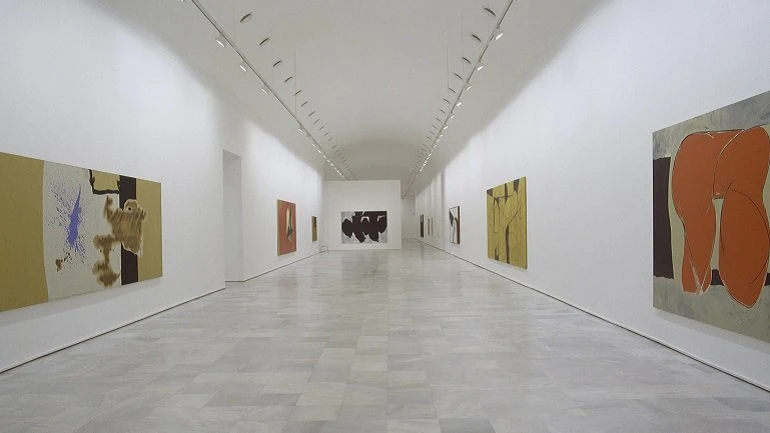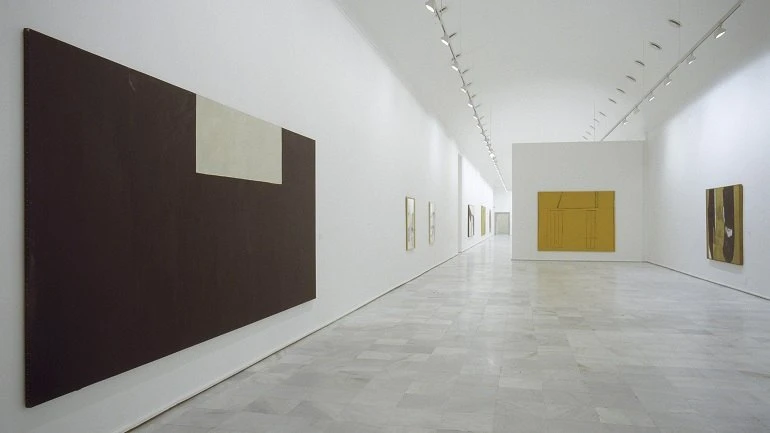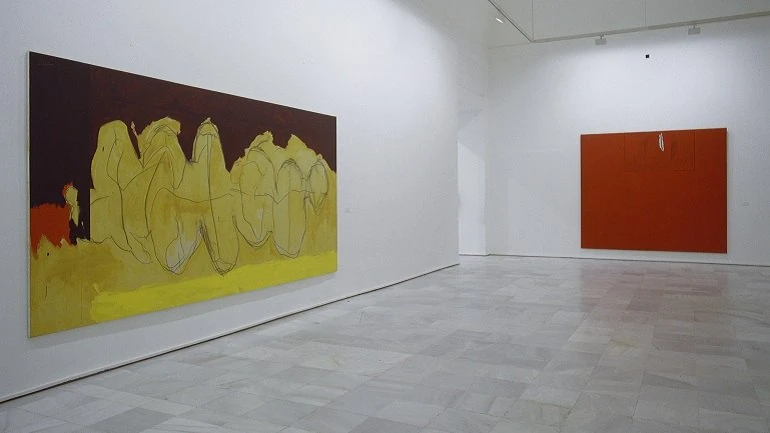Motherwell
In this exhibition -which brings together more than seventy paintings, collages and drawings- we see that the collection of his work is articulated by the idea of series, such as Open, Elegy to the Spanish Republic, Iberia or A la pintura. These series extend over decades and in them he explores "the pleasure of simple variations, usually automatic," as noted by Joan Banach, expert in Motherwell and curator of several of his exhibitions. His interest in Chinese discourse on painting as a precursor to writing can be seen in the structural use of the brush and in a painting that has a marked calligraphic character; Je t'aime No. VIII, (1957) or in the series Drunk with Turpentine (1979) in which his fascination for the tension between black and white is emphasised.
Motherwell studies philosophy at university and begins a career as writer, editor and lecturer. After that he discovers painting through artists Roberto Matta, Wolfgang Paalen and Kurt Seligmann and in the early forties joins the core group of exiled Surrealists in New York. He transforms psychic automatism into a kind of artistic automatism, which shows the origin of the term and method associated with Sigmund Freud. The desire for the identification between painting and mural painting led him to his canvasses on the floor without limits or barriers: Black on White (1961) or The Voyage: Ten years after (1961). In these cases, his pieces become essays on shades of a colour field, which avoid falling into monochrome when all tones are unfolded, as seen in Summertime in Italy, no. 7. (In golden ochre), 1961.
The series Elegy to the Spanish Republic, which begins in 1948, is the epitome of Motherwell’s style and pictorial language: using the plane of the wall and borders as well as the elegy as a poetic form and turned into a painting. Joan Banach states that "Motherwell identifies the reason for using elegy as a vehicle to present various rituals of mourning, loaded with potential and unlimited power which he discovers in compositions by Garcia-Lorca." Through his paintings, both because of the theme as because of the black that dominates the composition, he intends to anchor with culture and tradition of the Spanish Baroque and with the drama of the Civil War and the Franco years. Unlike Spanish Informalism and work by artists from the El Paso Grupo, his drama is characterised by the absence of a dramatic gestural brushwork in favour of the emotional abyss.
Artists
Fundaciò Antoni Tàpies, Barcelona (November 13, 1996 - January 12, 1997)
Organised by
Museo Nacional Centro de Arte Reina Sofía and Fundaciò Antoni Tàpies, Barcelona
Image gallery



Itinerary
Fundaciò Antoni Tàpies, Barcelona
13 November, 1996 - 12 January, 1997
Museo Nacional Centro de Arte Reina Sofía, Madrid
5 March, 1997 - 2 May, 1997